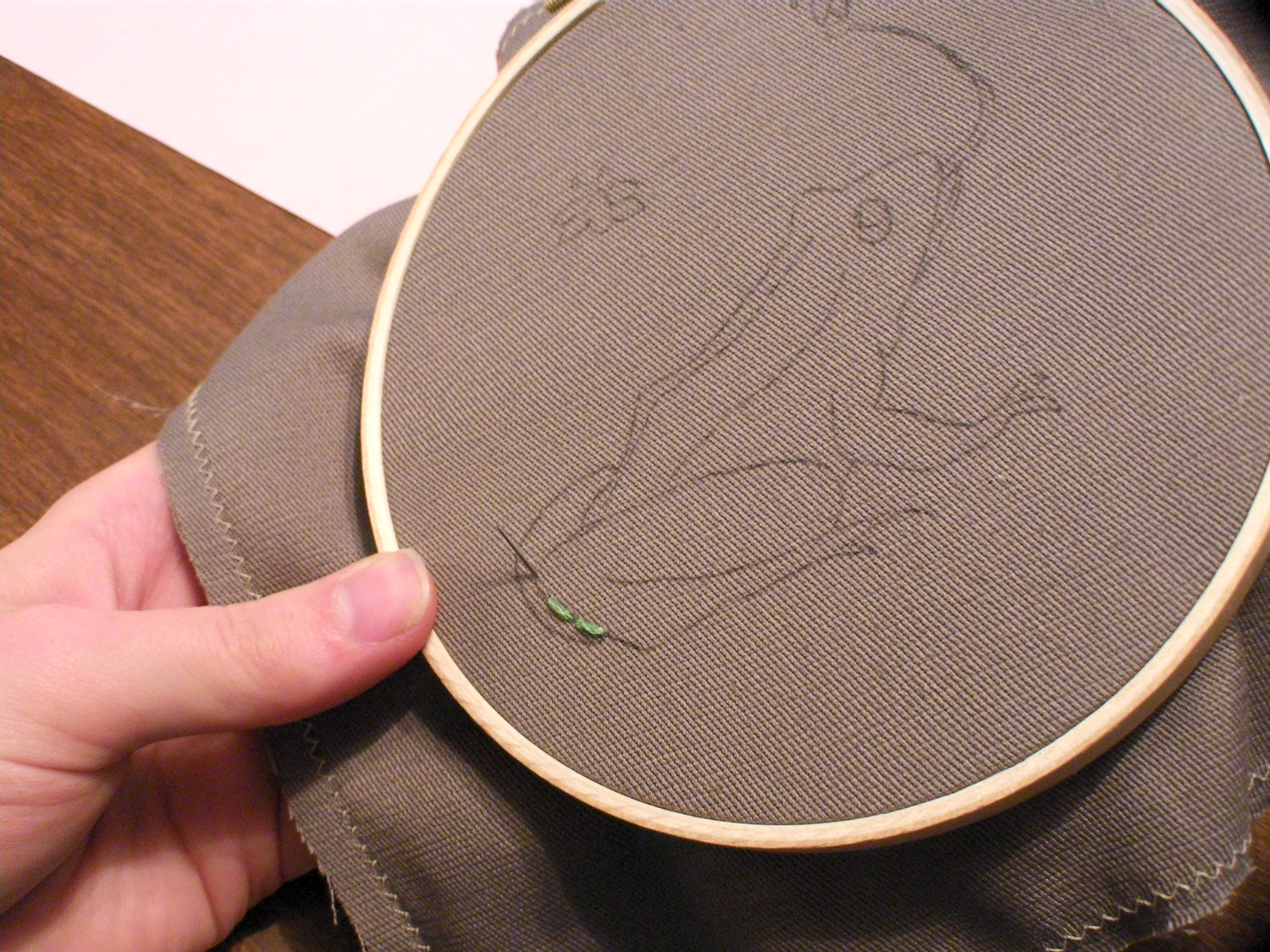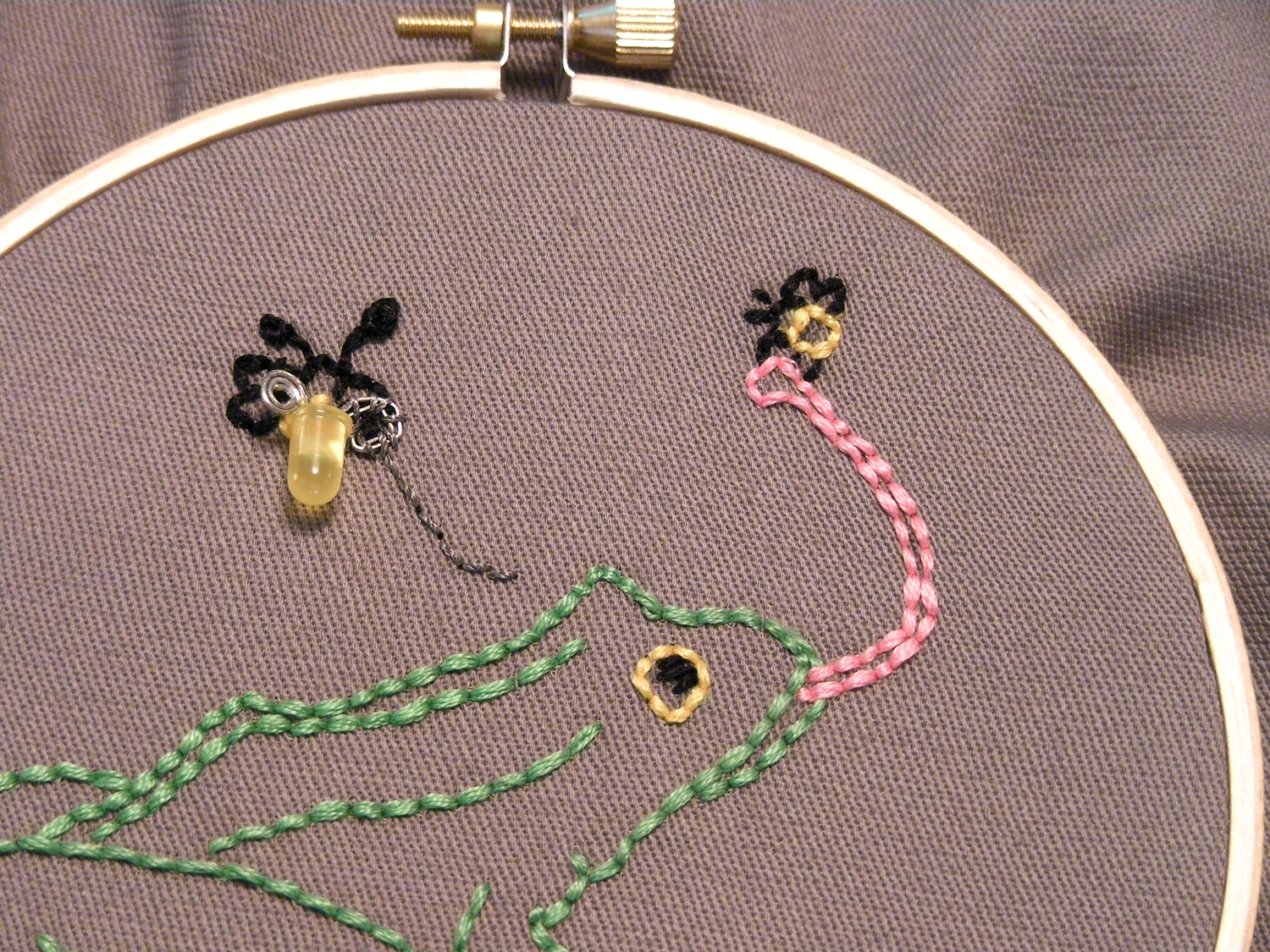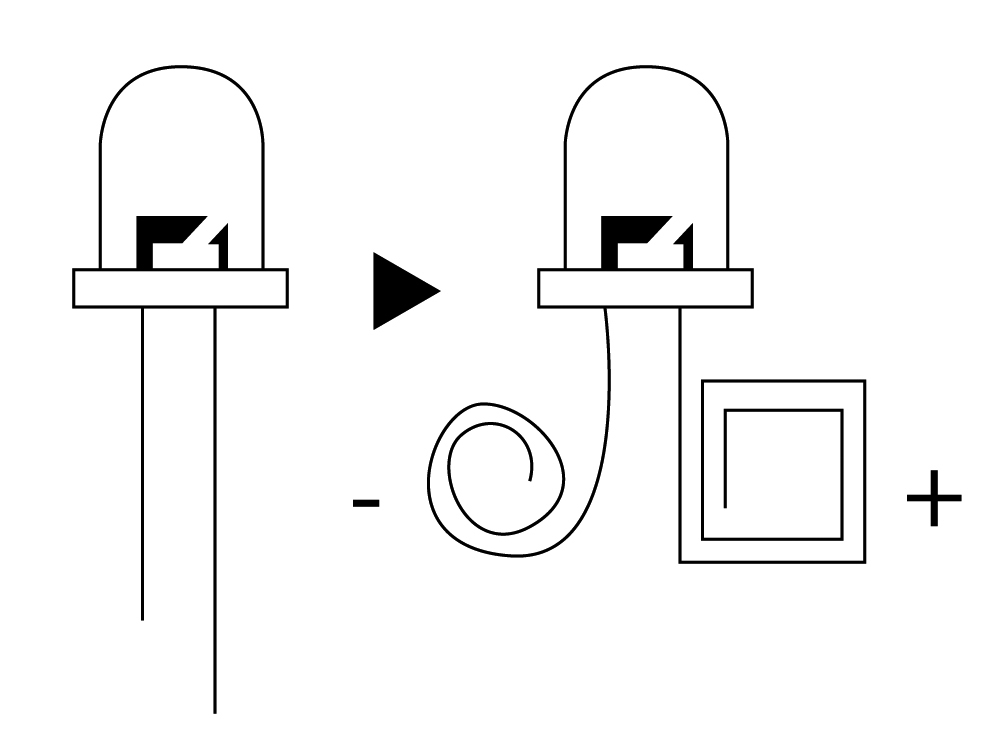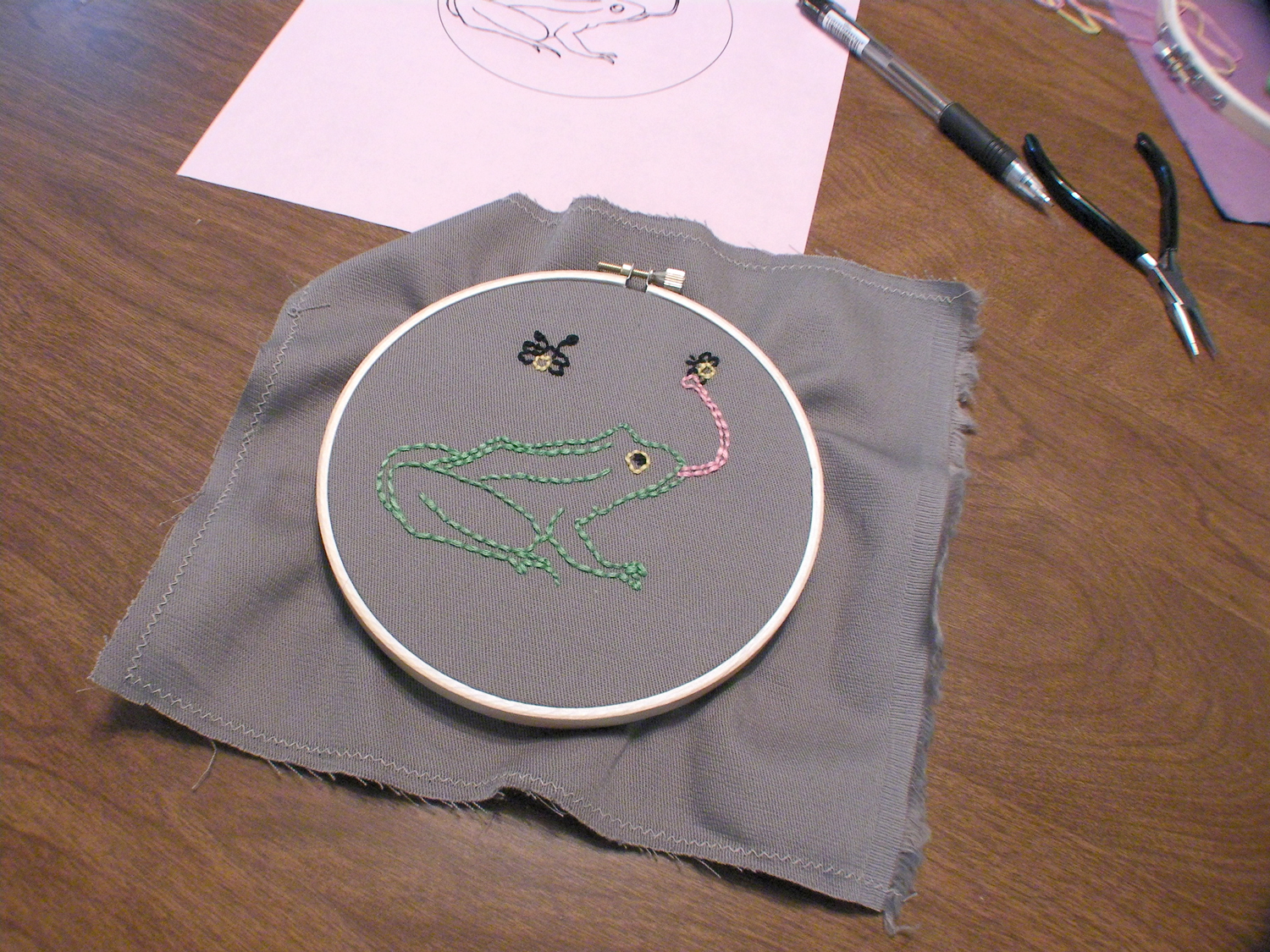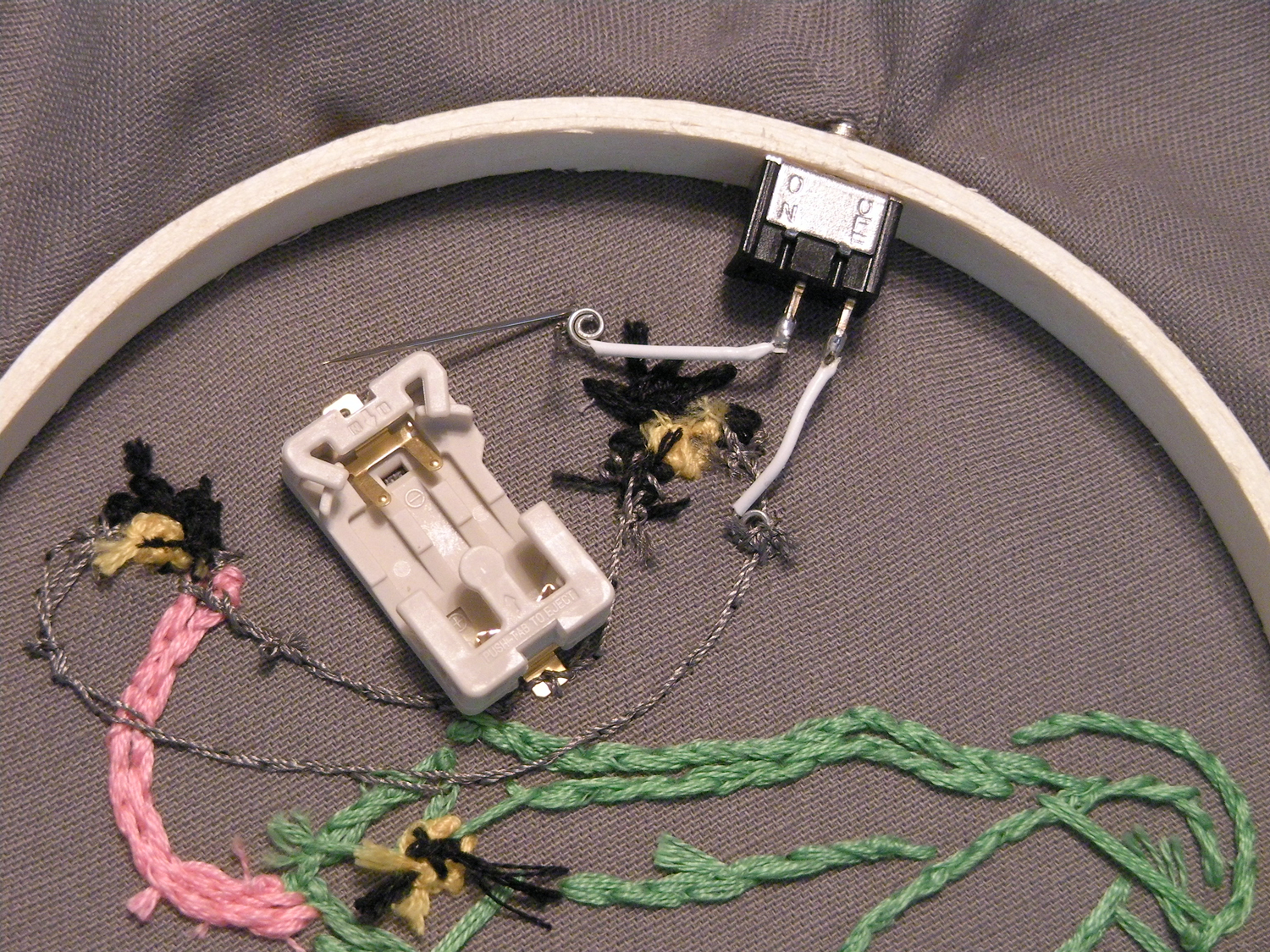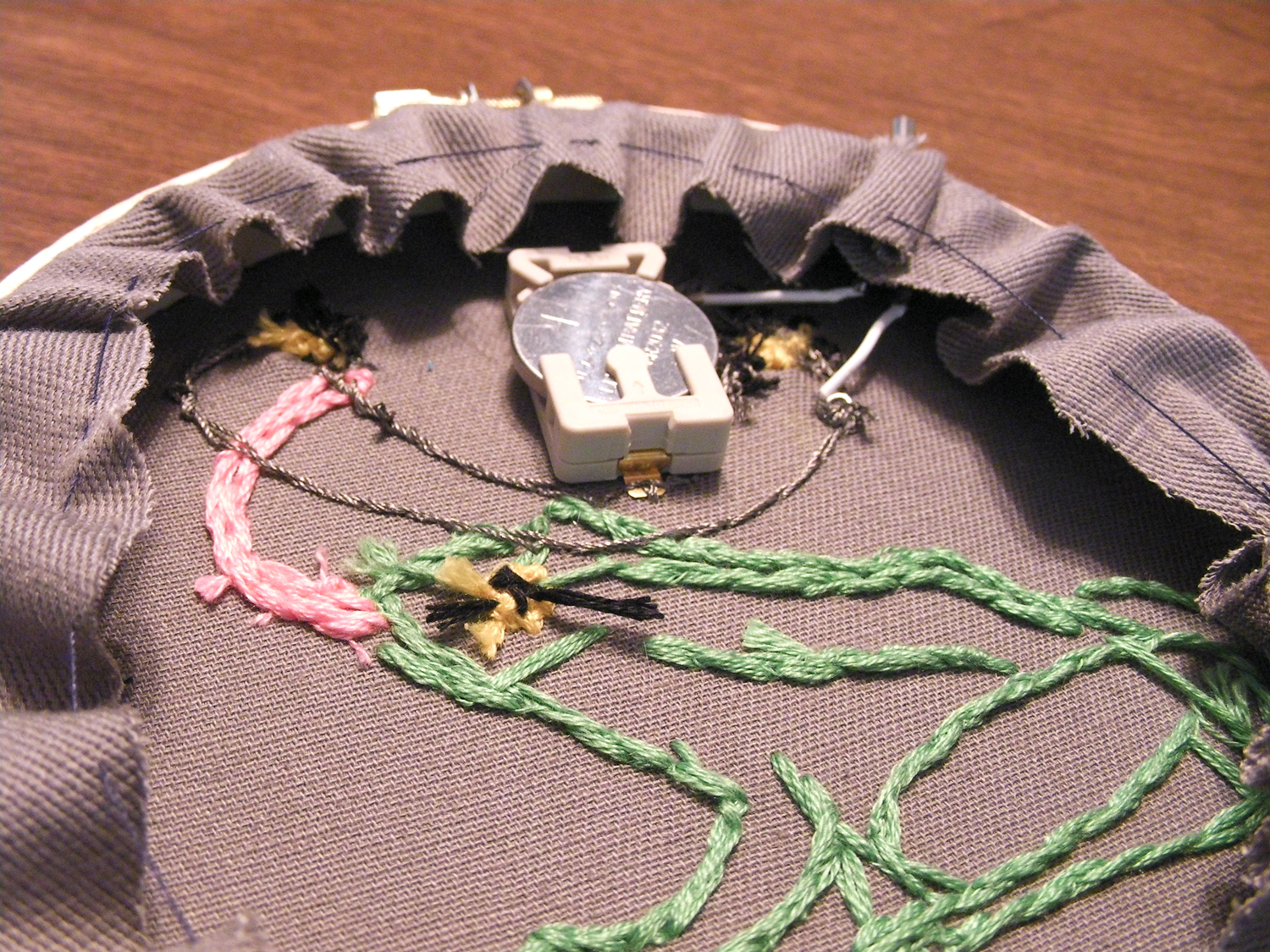I love any activity that promotes creativity and discovery. To me, tinkering with electronics is the same as stitching a picture, and combined they can tell a story that crafters and gearheads both want to hear. This picture of a frog catching fireflies is embellished with lights that bring the bugs to life. Conductive thread is the magic ingredient, bridging the gap between rigid metal and soft floss. To make a stitched scene light up, combine traditional embroidery techniques with a few common electronics components. The possibilities are endless, and the result is an artful conversation piece.
This project has an associated CRAFT Video.



